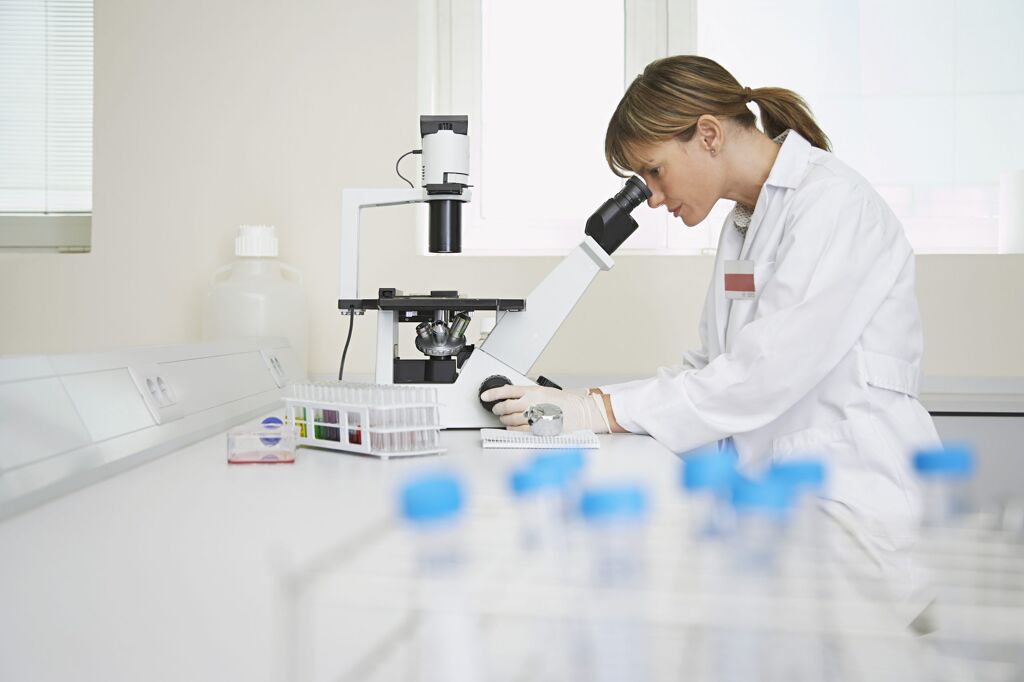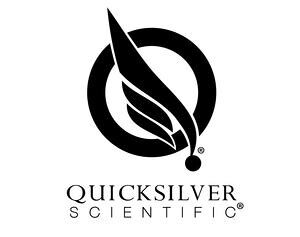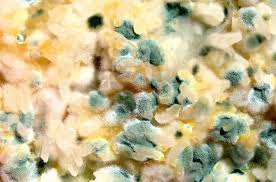DHEA Lab Testing: When to Use Serum, Saliva, and Urine

DHEA (Dehydroepiandrosterone) also known as DHEA-S (Dehydroepiandrosterone sulfate) is a hormone secreted by the adrenal glands and takes part in the production of the sex hormones estrogen and testosterone. In addition to DHEA, the adrenals also produce stress hormones cortisol and adrenaline, and the steroid aldosterone, which regulates blood pressure. DHEA production is generally at its highest in the twenties and decreases throughout adult life. Lower than normal amounts of DHEA often arise from pressure on the adrenal glands to produce other hormones such as cortisol, triggered by elevated stress levels. Depleted adrenal function results in fatigue, a diminished sense of self-worth and lower concentration. It is, therefore, helpful to test levels of DHEA for an individual to help identify root causes.
There are three types of tests available to substantiate the amounts of DHEA: urine, saliva, and serum testing. Traditionally, all hormone testing was done via serum, but these days, it is possible to use serum, saliva, and urine to assess a wide array of hormones. Each of these methodologies has advantages and limitations, and each has the best use. Sometimes a combination of tests will be necessary to provide you with the complete information.
Serum
Serum testing of hormones has long been accepted by the conventional medical community as the standard for measuring hormones. It has the advantage of being a relatively simple collection requiring little patient involvement and has very well-established reference ranges. Serum is ideal for testing peptide hormones such as FSH, LH, prolactin, fasting insulin, and thyroid hormones including Reverse T3, as well as thyroid antibodies. It is also used to measure Sex Hormone Binding Globulin (SHBG) and, less commonly, Cortisol Binding Globulin (CBG). For sex hormones, serum testing has a more limited utility. There are several reasons for this. For most sex hormones, no distinction is made in serum between bound and free hormone. Estradiol, estrone, estriol and progesterone are reported as total hormone and free hormones assays are not commonly available. This may lead to misleading results in which hormone levels appear to be normal or even high normal because of an abundance of bound hormone. However, if the free hormone level is low, the patient can be functionally deficient even with a normal total hormone level. Serum testosterone is an exception in that it is commonly available as both total and free, and therefore can be useful in assessing hormone balance. DHEA-S is also an exception as the marker measured is the desired value. Serum DHEA-S is our preferred way to get an accurate DHEA-S value.
To Read About Blog Topic, Scroll Down
Want To Work With Our Clinic?
Do you have a chronic or mystery illness that no one has been able to help you with? Are you simply wanting to re-connect with a healthier version of yourself? It’s Time To Finally Feel Better!
Saliva
In the past decade and a half, saliva testing has gained in popularity among practitioners of functional medicine. Saliva has the advantage of being non-invasive as well as being accessible to practitioners such as naturopathic physicians, chiropractors, and acupuncturists who may be practicing in states where they are not licensed to order blood tests or draw blood. Saliva collection also allows for multiple collections over a period of a day or month which can help elucidate abnormal hormonal patterns, such as a shortened luteal phase.
Saliva is best used to evaluate the balance and flow of the estrogens and progesterone in women who are still having menstrual cycles. It can also be used to evaluate cortisol secretion patterns by taking multiple samples over the course of a day and evening. A saliva test measures free hormone and its multi-point versatility makes it a better measure than serum for evaluating un-supplemented hormone status. Saliva production is difficult for some patients, and there are multiple restrictions regarding eating, drinking, gum-chewing, make-up use, topical application, and tooth-brushing that must be observed to get a useable specimen. Saliva can only be used to evaluate steroid hormones. Peptide hormones, such as growth hormone and thyroid are not available. While estradiol, estrone, and estriol, progesterone, testosterone, DHEA and cortisol are all available, depending on the lab, steroid hormone metabolites are not measured in saliva, limiting its utility in assessing metabolism of hormones.
Saliva measurements are greatly affected by the use of exogenous hormones. Transdermal progesterone and testosterone, in particular, can result in supra-physiological levels in saliva testing, but all exogenous hormone use seems to distort results to some extent. Because of this, patients are instructed to discontinue hormone use for between 12-36 hours prior to collection, depending on the hormone preparation. This can pose problems for practitioners who want to monitor hormone therapy. Estrogen, for example, washes out of the system almost entirely in 20 hours and drops significantly within 12 hours. Saliva collection, like blood, is a single point collection. Although cortisol can be collected at multiple points, sex hormones are measured from a single morning collection. Just as with serum tests, a single point of collection does not account for individual variation and may catch a peak or a valley in hormonal secretion – or perhaps a peak for one hormone and a valley for another.
Urine Testing
There is two option when it comes to urinary testing for adrenal function.
The first is the 24-Hour test where you collect in a 24-hour period. The shortcoming with this method is it is not able to a pattern of the daily free-cortisol.
Strengths: it is affordable and accurate for the measurement of total levels of various hormones and hormone metabolites.
Weaknesses: it is not able to measure cortisol rhythm, and is inaccurate if sublingual hormones, vaginal creams, or oral progesterone is being used, as well as testosterone testing may not be accurate if a genetic defect is present, or if a kidney issue exists.
The second method the Dried Urine test which provides a much more accurate and full picture and has become the preferred testing method amongst integrative and functional medicine practitioners.
Strengths: convenient, cost efficient, thought to be more accurate, ability to measure hormone metabolites, accurate if sublingual hormones or vaginal creams are being used.
Weaknesses: inaccurate if sublingual hormones are being taken orally, testosterone testing may be inaccurate if a genetic defect is present, results may be inaccurate if a kidney issue exists.
Serum, saliva, and urine testing can offer important insight into a patient’s hormonal status. Each has a set of clinical strengths and limitations, such that a combination of testing methodologies may occasionally be appropriate.
Our Clinical Preference:
- Obtain a SERUM (blood value) for:
- DHEA-S
- Testosterone with SHBG – to get free Testosterone, Progesterone, and Estradiol
- DUTCH (Dried Urine Test) for:
- Free Cortisol
- Estrogen breakdown
- Additional Hormones – beyond the scope of this article
This is a good comprehensive array for measuring and assessing hormonal balance or imbalance.
When the desired goal is to identify and area of dysfunction, looking at contributing factors such as diet, environment, lifestyle and how stress is being managed are crucial to bringing wellness back to the individual.
Book My Free Phone Health Evaluation Functional Medicine Certification for Clinicians
Reference
- Brambilla DJ et al. Intraindividual variation in levels of serum testosterone and other reproductive and adrenal hormones in men. Clin Endocrinol (Oxf). 2007;67:853-862
- Plymate SR et al. Circadian variation in testosterone, sex hormone binding globulin, and calculated non-sex hormone-binding globulin bound testosterone in healthy young and elderly men. J Androl. 1989. 10:366-371
- Mishra RG et al. Metabolite ligands of estrogen receptor-beta reduce primate hyperreactivity. Am J physiol. 2006;290(1):H295-303.
- Imanov O. et al. Estrogen receptor in health and disease. Biol Reproduct. 2005. 73(5):866-71.
- Granger DA. et al. The “trouble” with salivary testosterone. Psychoneuroendocrinology. 2004 Nov;29(10):1229-40.
- Kovacs J et al. Measurement of urinary melatonin: a useful tool for monitoring serum melatonin after its oral administration. J Clin Endocrinol Metab. 2000. 85(2):666-70.
- Stanczyk FZ et al. Standardization of steroid hormone assays: Why, how and when? Cancer Epidemiol Biomarkers Prev. 2007. Sep;16(9):1713-9.
- Bradlow HL. et al. 2-hydroxyestrogen: the ‘good’ estrogen. J Endocrinol. 1996 Sep;150. Suppl: S259-65.
- Tomlinson J. et al. 11β-hydroxysteroid dehydrogenase type 1: A tissue specific regulator of glucocorticoid response. Endocrine Reviews. 2004. 25(5);831-866.
- Jerjes WK, Taylor NF, Peters TJ, Wessely S, Cleare AJ. Urinary cortisol and cortisol metabolite excretion in chronic fatigue syndrome. Psychosom. Med. 2006;68(4):578–82.
- Vassiliadi D. et al. Increased 5 alpha-reductase activity and adrenocortical drive in women with polycystic ovary syndrome. J Clin Endocrinol Metab. 2009. 94(9):3558-66.
- Baisier WV. et al. Thyroid insufficiency. Is TSH measurement the only diagnostic tool? J Nutr Environ Med. 2000. 10:105-113.
- Hoshiro M. et al. Comprehensive study of urinary cortisol metabolites in hyperthyroid and hypothyroid patients. Clin Endocrinol. 2006. 64(1):37-45.
- Taniyama M. et al. Urinary cortisol metabolites in the assessment of peripheral thyroid hormone action: application for diagnosis of resistance to thyroid hormone. Thyroid. 1993. 3(3): 229-33.
- O’Leary, P., Feddema, P., Chan, K., Taranto, M., Smith, M., & Evans, S. (2000). Salivary, but not serum or urinary levels of progesterone are elevated after topical application of progesterone cream to pre-and postmenopausal women. Clinical endocrinology., 53(5), 615–20
- Lewis JG. Et al. Caution on use of saliva measurements to monitor absorption of progesterone from transdermal creams in postmenopausal women. Mauritas. 2002. 41(1):1-6.
- Ginsberg ES. Et al. Half life of estradiol in postmenopausal women. Gynecol Obstet Invest. 1998;45(1):45-8.
- Jerjes, W., Taylor, N., Peters, T., Wessely, S., & Cleare, A. (2006). Urinary cortisol and cortisol metabolite excretion in chronic fatigue syndrome. Psychosomatic medicine., 68(4), 578–82
Are You Suffering From A Chronic Illness?
Does your current health situation look like this…
- Do you feel that you have tried many things and either nothing works, or the treatment does not hold?
- Have you been told that there is nothing that can be done to reverse your illness and you just need to manage symptoms?
- Does your illness impact your work, your family, your happiness and your social life?
We specialize in finding answers and solutions for complicated chronic illness when people feel like they have tried everything. If this sounds like you, book a free call with us to see if we are the right fit for your health goals.
Dr. Miles has spoken for the following organizations:


















Responses